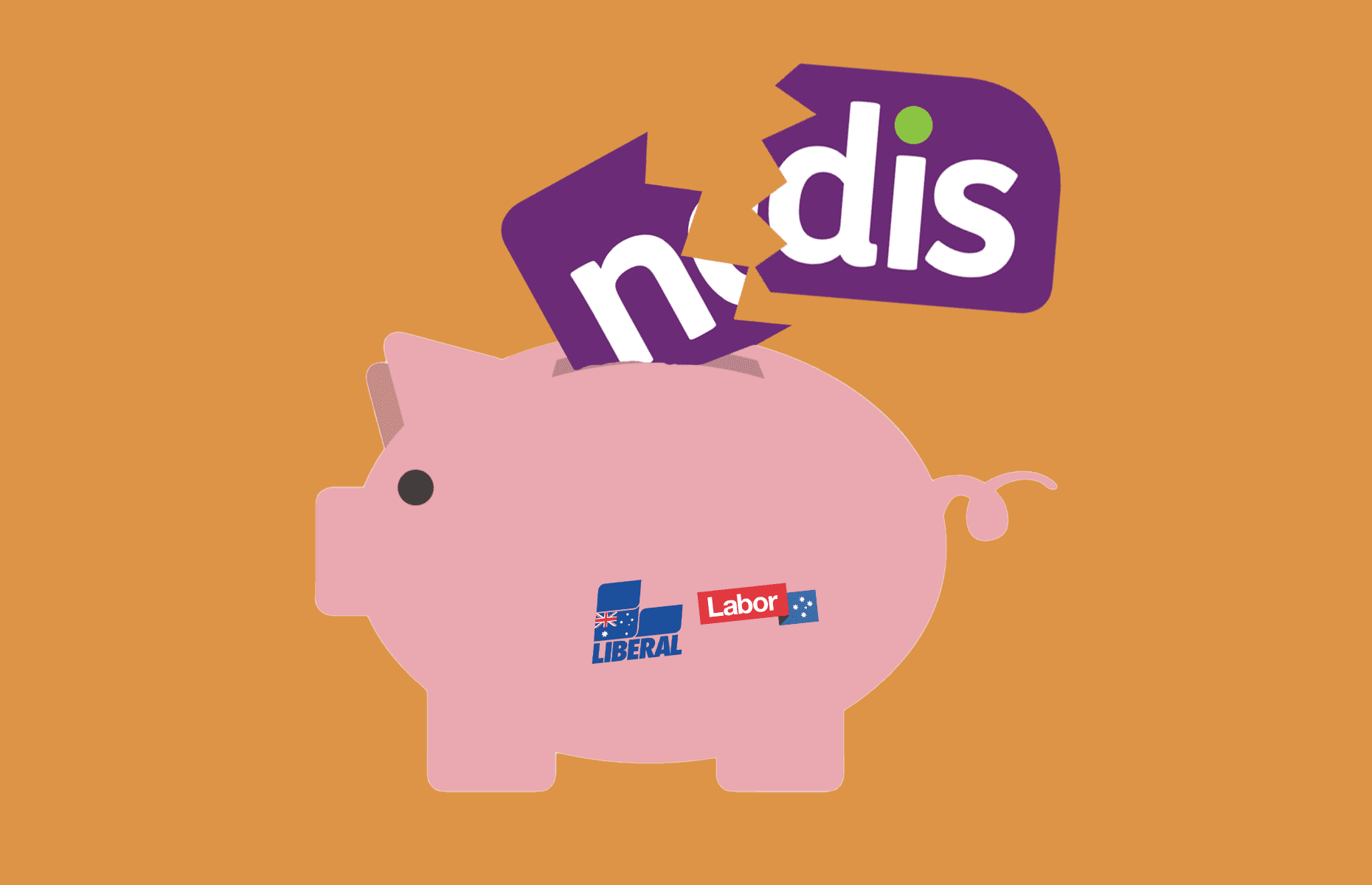As the federal election heats up ahead of polling day next week, media attention has focused on Peter Dutton’s international security fearmongering, and the Prime Minister’s apparent volte-face when it comes to his leadership style. At the same time, the vital debate around the costs of the National Disability Insurance Scheme (NDIS) has gone largely unnoticed.
The NDIS passed with bipartisan support in 2013 during the last months of Julia Gillard’s government, reforming disability care from the previous grant-based model under the National Disability Agreement (NDA). As part of the NDA, Canberra was only responsible for employment services and compliance funding for state governments. The NDIS is not means-tested and, like Medicare, is uncapped and driven by demand. Today, it is jointly administered between the federal, state and territory governments as a unified system.
The nine years that followed the 2013 reforms were characterised by political wrangling over the scheme, particularly between the federal and state governments over the implementation of the NDIS. The ongoing Disability Royal Commission has already unveiled systemic underpayment of disabled workers in Australian Disability Enterprises and allegations of violence and neglect by NDIS providers looming in the background. As such, the current debate over the NDIS will hold significant implications for hundreds of thousands of disabled Australians for the years to come.
Most recently, NDIS Minister Linda Reynolds warned that the NDIS was financially unsustainable, following the NDIA’s forecasts that the scheme could cost $40.5 billion by 2025. This prediction, however, overlooks the positive returns of the scheme, including increasing workforce participation of both disabled people and carers, and reducing reliance on residential care or aid schemes. According to the think tank Per Capita, the broader economic benefits of the NDIS will continue to outweigh additional costs, with the organisation estimating these to exceed $50 billion annually.
In March, the Sydney Morning Herald reported that the National Disability Insurance Agency (NDIA) — the agency tasked with implementing the NDIS — was spending tens of millions in expensive litigation to battle tribunal complaints over NDIS plans. In the same month, it was also revealed in the NDIS’s last quarterly report that the average plan size for recipients fell by four per cent between 2020 and 2021. This fall, attributed to stealth cuts by the government, was condemned, as the reduction targeted individual plans instead of the overall budget allocated for the scheme by the federal government.
So far, the debate on the NDIS by the two major parties has been slow, although the ALP’s platform on the NDIS in this election is better than the Liberals’ one.
In fact, the NDIS is one of the notable absences from the Liberal manifesto, receiving barely any attention beyond Reynolds’ framing of the ALP’s promise to recruit an additional 380 staff for the agency as evidence of the opposition’s economic untrustworthiness. Last year, however, the government proposed plans such as an independent assessment, powers for the NDIA CEO to vary individual plans, and power for the NDIS Minister to determine eligibility requirements. The latter is particularly controversial, perceived as a paternalistic attempt to vary individual plans without consultations with participants, and to reduce the number of Australians eligible to partake in the scheme.
Eventually, these policies were shelved following fierce opposition from disability advocates and the numbers not being there in Parliament. Should the Coalition seize victory, it is not inconceivable that these ideas may receive momentum and be revived in Parliament. This would represent a setback for the disabled community, as it will likely lead to an increase in conflicts between NDIS participants and NDIA bureaucracy.
On the other hand, the ALP’s platform under Anthony Albanese and Shadow NDIS Minister Bill Shorten is promising further reviews into the NDIS, increased disabled representation on the NDIA Board and Executive, publication of data, and an officer dedicated to regional NDIS delivery, among other policies. Some of these are long overdue recommendations from past reviews, with data transparency urged by the Productivity Commission’s report in 2017.
Although the ALP’s proposal of a co-designed review of the NDIS that includes disabled Australians among reviewers is a positive sign, the party’s platform remains disproportionately focused on costs instead of autonomy for NDIS recipients. Any review should focus on addressing this erosion of autonomy.
In view of the coming election, NDIS spending should be viewed as a greater investment for the common good rather than targeted for budget cuts. The rhetoric surrounding the NDIS frames it as an overly expensive scheme due to an increase in the number of expected participants; this suggests that both sides of politics are underestimating the proportion of disabled individuals requiring “reasonable and necessary” support in the first place. At present, nearly two per cent of the Australian population, or 449,900 people, are NDIS participants — a low number compared to the 1.4 million the Australian Institute of Health and Welfare identified as requiring substantial accommodation. The scheme should be structured to reflect the country as a whole, rather than the structural underestimation of the disabled community.
Further, the major parties must place trust in disabled communities instead of espousing a paternalistic view of disability support. Indeed, the 2020 Tune Review of the scheme revealed “frustrations, dissatisfaction and sometimes anger” at the byzantine architecture of the NDIS. As such, a focus on autonomy means increasing freedom for NDIS recipients to decide how their plan is managed and what support is needed for each person. This in turn gets the level of support correct and reduces the risk of NDIS plans being appealed. The latter is the chief culprit for why legal costs associated with the scheme are ballooning to begin with.
Otherwise, frustrations among the disabled community towards the federal government will only escalate on what is a sound scheme that has so far served to enhance the experience of disabled people.





